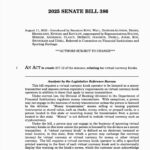Bitcoin’s September Sentiment
As August draws to a close, Bitcoin has been largely moving sideways, and cryptocurrency investors are bracing for a potential downturn, a pattern that has become customary around this time each year.
This trend, commonly referred to as “Red September” or the “September Effect,” has been noted in traditional markets for nearly a century.
Since 1928, the S&P 500 index has shown an average negative return for September, making it the only month in its history to consistently exhibit negative performance. The situation is even more alarming for Bitcoin: since 2013, it has averaged a loss of 3.77% during September, suffering from eight significant declines, according to data from Coinglass.
Yuri Berg, a consultant at FinchTrade, offers insight on this phenomenon:
“September has become more of a psychological experiment than a market anomaly. A selling wave is being generated by expectations rather than historical data.”
This situation arises from inherent market behaviors. Numerous investment funds conclude their fiscal year in September, often selling off losing positions for tax advantages and reorganizing their portfolios. As the summer holidays end, investors return to their trading desks, reassessing their status after a period of low liquidity. Additionally, an increase in bond issuance following September accelerates the movement away from stocks and other high-risk assets.
For the cryptocurrency market, these effects are amplified. Bitcoin, which operates 24/7, doesn’t have circuit breakers to intervene during sell-offs, and its relatively smaller market capitalization makes it susceptible to significant actions by large investors.
Outlook for September 2025
As September 2025 approaches, the signals are mixed. The Fed has communicated optimistic messages, with markets anticipating the possibility of another interest rate cut for their meeting on September 18. However, core inflation remains steady at 3.1%, while ongoing conflicts are disrupting global supply chains.
“There are two major conflict zones in Europe and the Middle East, affecting critical supply chains. Furthermore, the US has entered a trade war with many of its allies. This geopolitical environment increases the risk of a significant decline for Bitcoin in September.”
“’Red September’ is more of a myth. Historically, September has looked weak because of portfolio rebalancing, waning retail investor interest, and macro uncertainties. But that was true when Bitcoin was smaller. Today, liquidity is the real determining factor.”
“Assessing market sentiment in the upcoming weeks is crucial. If the indices rise, waiting might be necessary; if they decline, preparing for potential selling could be prudent.”
This is not investment advice!



















